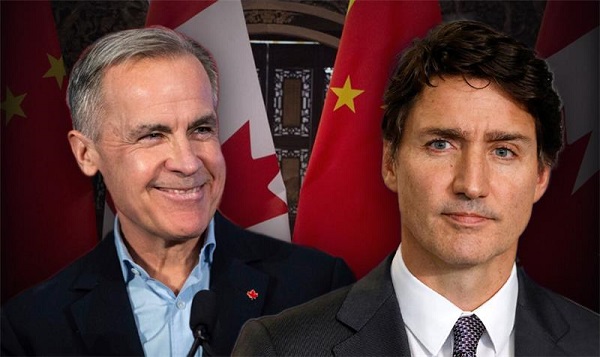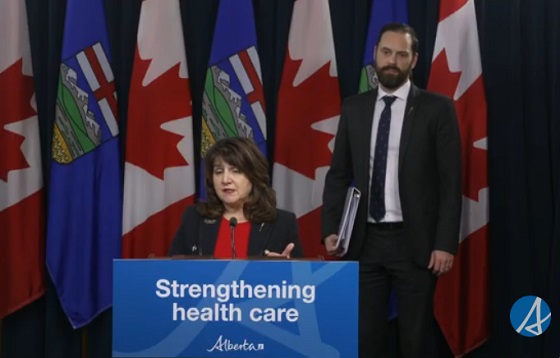Frontier Centre for Public Policy
Is the Senate in Violation of the 2006 Indian Residential Schools Settlement Agreement, and Hindering Reconciliation?
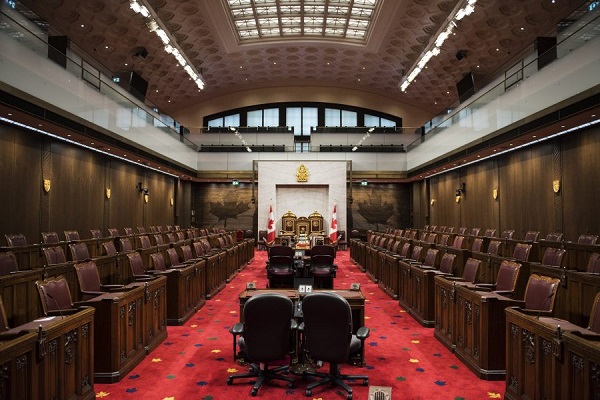
From the Frontier Centre for Public Policy
By Nina Green
Since it is abundantly clear there are no missing Indian residential school children, the ‘missing records’ by which they can be found are also imaginary, and the Senate Committee has been on a pointless wild goose chase
In July 2024 the Standing Senate Committee on Indigenous Peoples issued an Interim Report entitled ‘Missing Records, Missing Children’.
The problem with that title? There are no missing Indian residential school children.
Special Interlocutor Kimberly Murray told the Senate Committee on 21 March 2023 that there are no missing children, and in support of that one need only look to her own two interim reports, neither of which identifies a single Indian residential school child who went missing and whose parents didn’t know what happened to their child. In two years as Special Interlocutor, Kimberly Murray has not been able to name a single child who verifiably went missing from an Indian residential school.
Similarly, after two years of hearings, the Senate Committee itself was unable to name a single verifiably-missing Indian residential school child in its report.
Nor in fact has anyone in Canada to date been able to name a single verifiably-missing Indian residential school child.
Since it is abundantly clear there are no missing Indian residential school children, the ‘missing records’ by which they can be found are also imaginary, and the Senate Committee has been on a pointless wild goose chase which has cost Canadian provinces a very considerable amount of money since many of the witnesses called by the Committee have been provincial government employees whose departments have been forced to expend staff time and financial resources fruitlessly searching for records of missing Indian residential school children who are not missing.
Moreover by calling provincial coroners, medical examiners, and vital statistics department officials as witnesses, the Senate Committee has given the distinct impression that it is conducting a criminal investigation, and by focussing on Indian residential schools, the Committee has also given the distinct impression it has reconstituted itself as a new Truth and Reconciliation Commission (TRC), and is therefore in violation of the 2006 Indian Residential Schools Settlement Agreement.
What justification does the Senate Committee have for conducting this public inquiry into ‘Missing Records, Missing Children’, and threatening to compel the attendance of witnesses at its hearings?
The Committee cites the following Order of Reference passed by the full Senate as justification for its July 2024 report, and for the sweeping and far-reaching recommendations the report contains:
ORDER OF REFERENCE
Extract from the Journals of the Senate of Thursday, March 3, 2022:
The Honourable Senator Francis moved, seconded by the Honourable Senator Cordy:
That the Standing Senate Committee on Aboriginal Peoples be authorized to examine and report on the federal government’s constitutional, treaty, political and legal responsibilities to First Nations, Inuit and Métis peoples and any other subject concerning Indigenous Peoples; . . . .
It is glaringly obvious that the Order of Reference did not authorize the Committee to examine and report on missing Indian residential school children and missing records. The Senate is part of the federal government, the major party to the 2006 Indian Residential Schools Settlement Agreement under which Canadian taxpayers paid out billions of dollars to have all matters related to Indian residential schools settled once and for all – not re-opened by the Senate Committee on a whim. The Senate Committee has thus interpreted the Order of Reference as giving it an authority the full Senate did not explicitly mention, and in fact had no power to grant to the Committee.
During its proceedings over the past two years, the Senate Committee did not trouble itself to prove that there actually are missing Indian residential school children. Instead, the Committee operated on the basis that there are missing children even when Special Interlocutor Kimberly Murray told the Committee that ‘The children aren’t missing’.
Based on the false assumption that there are missing Indian residential children, the Committee proceeded to castigate those the Committee falsely claimed were ‘withholding’ records which would help to find them.
In doing so, the Committee ignored the fact that the only body which was ever actually entitled to records was the Truth and Reconciliation Commission (TRC).
Under the 2006 Indian Residential Schools Settlement Agreement, $60 million dollars was allocated to fund a Truth and Reconciliation Commission, and section 11 of the TRC’s Schedule N mandate stated that, subject to privacy interests:
Canada and the churches will provide all relevant documents in their possession or control to and for the use of the Truth and Reconciliation Commission.
It should be noted that under the TRC’s Schedule N mandate important limitations were put in place stipulating who was obligated to provide documents to the TRC, how long that obligation was to exist, and what was to be done in case of a dispute about the production of documents. The TRC’s Schedule N mandate provided that:
(1) only the federal government and the churches – i.e., not provincial governments or any other entity – were obliged to provide documents;
(2) the federal government and churches were only obliged to provide documents to the TRC during the TRC’s five-year mandate; and
(3) under section 2(l) of the TRC’s Schedule N mandate any ‘disputes over document production’ would be referred to an officially-designated body, the National Administration Committee (NAC) set up under section 4.11 of the 2006 Settlement Agreement.
The TRC concluded its work and issued a final report in 2015. That marked the end of any obligation on the part of the federal government and the churches to provide documents to the TRC, which ceased to exist and had no successor.
The Senate Committee has thus invented a problem where none existed.
That being the case – there was no problem until the Senate Committee invented one – exactly what is the problem the Senate Committee invented?
Again, one must refer back to the 2006 Settlement Agreement and the TRC’s Schedule N mandate. Section 2(a) of the Schedule N mandate states that, subject to privacy legislation, the TRC was:
authorized and required in the public interest to archive all such documents, materials, and transcripts or records of statements received, in a manner that will ensure their preservation and accessibility to the public.
To fulfil this part of its mandate, in 2013 the TRC entered into a trust deed with the University of Manitoba by which the University undertook to preserve the TRC records and make them available to the general public. That has not been done. The University of Manitoba has not made the records generated by the TRC itself in the course of its work and the records turned over to it by the federal government and the churches prior to 2015 available to the general public on its National Centre for Truth and Reconciliation (NCTR) Archives website. In particular, the University of Manitoba has not made available on its NCTR website the Sisters’ chronicles and Oblate codices which recorded daily life in the schools. Instead, the University has allowed its staff at the NCTR (which is not a legal entity and is not a successor to the TRC, but merely a building on the University of Manitoba campus staffed by University of Manitoba employees) to turn its millions of digitized records into a publicly-funded Indigenous genealogical service, as Head Archivist Raymond Frogner has explained on several occasions, and as Tanya Talaga documents in her new book, The Knowing.
Thus, if the Senate Committee had wanted to investigate an actual problem, it could have investigated why the University of Manitoba has not complied with its legal obligations under the 2013 trust deed and has not made the TRC records available to the general public as mandated by the 2006 Indian Residential Schools Settlement Agreement and the TRC’s Schedule N mandate, particularly the Sisters’ chronicles and Oblate codices which recorded daily life in the schools.
Instead of investigating that very real problem, the Senate Committee pursued a problem of its own invention by falsely claiming that records were being withheld from the ‘NCTR’ by Catholic church and provincial entities. This appears to be deliberate obfuscation because the Senate Committee must surely know that the NCTR is not a legal entity, and thus cannot legally receive documents. The actual recipient of documents sent to the ‘NCTR’ is the University of Manitoba, a fact which is never mentioned in the Senate report. Moreover the Senate report provided no evidence that any documents were actually being withheld, which of course it could not have done even had it tried since there is no legal obligation on the part of any entity to provide the University of Manitoba and the University’s NCTR staff with documents or records.
Ignoring the fact that it had invented a non-existent problem, the Senate Committee forged ahead, holding hearings and threatening to compel the attendance of witnesses. It is noteworthy that in so doing the Committee engaged in conduct which the TRC itself was forbidden to engage in under its Schedule N mandate, which states that ‘Pursuant to the Court-approved final settlement agreement and the class action judgments’, the TRC:
(b) shall not hold formal hearings, nor act as a public inquiry, nor conduct a formal legal process;
(c) shall not possess subpoena powers, and do not have powers to compel attendance or participation in any of its activities or events. Participation in all Commission events and activities is entirely voluntary;
Here is what Senator Scott Tannas had to say about holding hearings and hauling up witnesses in public on 21 March 2023 in an exchange with the University of Manitoba’s employee, Stephanie Scott:
Senator Tannas: Thank you for being here today. Ms. Scott, you mentioned that there are still organizations and people with data that has not been turned over to you. We all want to do things to help. Part of helping is listening and talking, but sometimes part of help that we can provide is to actually do something. Here in the Senate, we do have the ability to hold oversight hearings. We can compel people to come and testify before us. What would you think if you gave us the names and the contacts for organizations that aren’t providing data, and we’ll haul them up here in public and we’ll ask them why?
Ms. Scott: I would love for you to do that. We have been waiting a long time, and I think it’s absolutely crucial. When Tk’emlúps happened and the children began to speak from beyond, that’s when the world and the landscape changed for us. We used to have to do a lot of reaching out across the country, developing partnerships, still trying to acquire different records. We have worked closely — I think it’s time — the time is now, the time could be today that you call upon those people, and I would be more than willing to share that information with you. We have done a public media campaign. There are no secrets. Everything has been public and we all know what’s happened, many of us here at this table. If you are willing to do that, I respectfully would ask you to help.
Senator Tannas: I certainly would advocate for that. If you want to send the clerk, for future discussions, the name of let’s say the three most flagrant and obvious resistors, we could start maybe there and talk about it as a group. All senators would have to agree that’s a kind of meeting that we were going to have. To me, there is a time for action. As Senator Arnot mentioned, we’re not going to get anywhere until we get all the data. We won’t get to the full and complete truth, which is what all Canadians should want. It’s the only way we’re going to move forward. Thank you, that’s the only question I had.
‘Flagrant and obvious resistors’? It is unconscionable that Stephanie Scott, an employee of the University of Manitoba, would agree to provide (and did provide) the Senate Committee with a list of ‘flagrant and obvious resistors’ when she has to be aware that there is no legal obligation on the part of any entity to provide a single document to the University of Manitoba or its NCTR staff.
But even more importantly, it is unconscionable that the University of Manitoba and its NCTR employees continue to pretend that there are missing children, and continue to pretend that the University needs millions of records to identify these non-existent missing children.
Does the Senate Committee’s report further reconciliation? Obviously not. The report misleads Canadians, both Indigenous and non-Indigenous, in a way which is harmful to both by pretending that thousands of Indian residential school children are missing who are not missing, and that the provinces and the Catholic Church are withholding records that would help find them.
The Senate Committee should immediately withdraw its July 2024 interim report.
Nina Green is an independent researcher who lives in British Columbia.
armed forces
Canada At Risk Of Losing Control Of Its Northern Territories

From the Frontier Centre for Public Policy
By Gerry Bowler
Canada has left the North wide open to foreign powers eager to grow their Arctic foothold
Canada is in danger of losing the Arctic because Ottawa has ignored the North for far too long.
The Canadian North makes up 40 per cent of our land mass and includes more than 19,000 islands in the Arctic Archipelago. Yet only about 120,000 people live across this enormous stretch of wilderness. Canada took control of the region in the late 19th century through territorial transfers from the Hudson’s Bay Company and the British Crown, one of the largest land transfers in history.
For decades afterward, the North received little federal attention. The Second World War briefly changed that, prompting construction of the Alcan Highway to Alaska and bringing new airfields and telephone lines.
The Cold War, along with the threat of Soviet bombers crossing the Pole, led to multiple radar lines. Still, Prime Minister St-Laurent admitted in the 1950s that Canadian governments had treated the North “in an almost continuing state of absence of mind.”
John Diefenbaker’s Progressive Conservative administration tried to reverse that neglect. In 1958, he told a Winnipeg audience: “I see a new Canada—a Canada of the North! … We intend to carry out the legislative program of Arctic research, to develop Arctic routes, to develop those vast hidden resources the last few years have revealed.”
Plans for a research and industrial city in Frobisher Bay, new roads and railway lines and wide-ranging surveys were ambitious but ultimately unaffordable. In the years that followed, both Liberal and Conservative governments again set northern development aside.
Foreign interest, however, continued to grow. The Canadian Security Intelligence Service recently reported Russian and Chinese attempts at influence and subversion in our northern territories.
American governments over the past 20 years have shown serious interest in the region’s resources, which include significant oil, gas and mineral deposits, along with control of the Northwest Passage, a shipping route becoming increasingly accessible as Arctic sea ice recedes.
Canada considers those waters national; the United States, the European Union and at times China argue it is an international strait.
For all practical purposes, Canada has what amounts to no meaningful presence north of the tree line, leaving the field open to countries with far more ambition and far better-equipped forces.
Canada is in no position to defend its claims. We have no icebreakers capable of operating through the Arctic winter. We have no submarines that can work under the ice cap. We have no permanent air base for fighter jets.
And to cover two million square kilometres of Arctic territory, we have only 300 troops stationed there. The chance they could detect, let alone repel, a serious intruder is essentially zero. Without these capabilities, Canada cannot properly monitor activity in the region or enforce its sovereignty claims.
In the last federal budget, Ottawa announced a $1-billion Arctic infrastructure fund for new airports, seaports and all-season roads. Our foreign affairs minister has urged NATO to pay more attention to the Arctic, saying it “must be an organization not only that focuses on the eastern flank, but also that looks north.”
These steps are gestures, not strategy. Canadian governments excel at promises but struggle with procurement, and the idea that European allies might fill the gap, considering their weak response to Russia’s assault on Ukraine, is unlikely.
Our northern territory is under threat. We must use it or lose it.
Gerry Bowler is a Canadian historian and a senior fellow of the Frontier Centre for Public Policy.
Crime
How Global Organized Crime Took Root In Canada
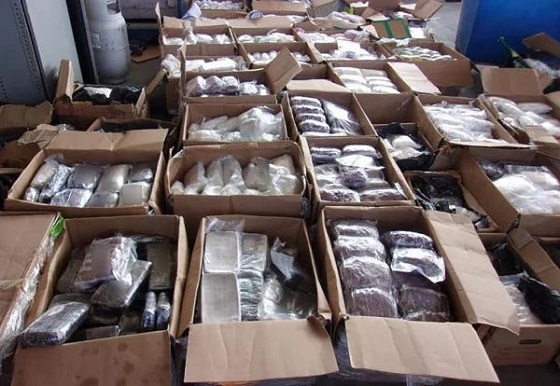
From the Frontier Centre for Public Policy
Weak oversight and fragmented enforcement are enabling criminal networks to undermine Canada’s economy and security, requiring a national-security-level response to dismantle these systems
A massive drug bust reveals how organized crime has turned Canada into a source of illicit narcotics production
Canada is no longer just a victim of the global drug trade—it’s becoming a source. The country’s growing role in narcotics production exposes deep systemic weaknesses in oversight and enforcement that are allowing organized crime to take root and threaten our economy and security.
Police in Edmonton recently seized more than 60,000 opium poppy plants from a northeast property, one of the largest domestic narcotics cultivation operations in Canadian history. It’s part of a growing pattern of domestic production once thought limited to other regions of the world.
This wasn’t a small experiment; it was proof that organized crime now feels confident operating inside Canada.
Transnational crime groups don’t gamble on crops of this scale unless they know their systems are solid. You don’t plant 60,000 poppies without confidence in your logistics, your financing and your buyers. The ability to cultivate, harvest and quietly move that volume of product points to a level of organization that should deeply concern policymakers. An operation like this needs more than a field; it reflects the convergence of agriculture, organized crime and money laundering within Canada’s borders.
The uncomfortable truth is that Canada has become a source country for illicit narcotics rather than merely a consumer or transit point. Fentanyl precursors (the chemical ingredients used to make the synthetic opioid) arrive from abroad, are synthesized domestically and are exported south into the United States. Now, with opium cultivation joining the picture, that same capability is extending to traditional narcotics production.
Criminal networks exploit weak regulatory oversight, land-use gaps and fragmented enforcement, often allowing them to operate in plain sight. These groups are not only producing narcotics but are also embedding themselves within legitimate economic systems.
This isn’t just crime; it’s the slow undermining of Canada’s legitimate economy. Illicit capital flows can distort real estate markets, agricultural valuations and financial transparency. The result is a slow erosion of lawful commerce, replaced by parallel economies that profit from addiction, money laundering and corruption. Those forces don’t just damage national stability—they drive up housing costs, strain health care and undermine trust in Canada’s institutions.
Canada’s enforcement response remains largely reactive, with prosecutions risk-averse and sentencing inadequate as a deterrent. At the same time, threat networks operate with impunity and move seamlessly across the supply chain.
The Edmonton seizure should therefore be read as more than a local success story. It is evidence that criminal enterprise now operates with strategic depth inside Canada. The same confidence that sustains fentanyl synthesis and cocaine importation is now manifesting in agricultural narcotics production. This evolution elevates Canada from passive victim to active threat within the global illicit economy.
Reversing this dynamic requires a fundamental shift in thinking. Organized crime is a matter of national security. That means going beyond raids and arrests toward strategic disruption: tracking illicit finance, dismantling logistical networks that enable these operations and forging robust intelligence partnerships across jurisdictions and agencies.
It’s not about symptoms; it’s about knocking down the systems that sustain this criminal enterprise operating inside Canada.
If we keep seeing narcotics enforcement as a public safety issue instead of a warning of systemic corruption, Canada’s transformation into a threat nation will be complete. Not because of what we import but because of what we now produce.
Scott A. McGregor is a senior fellow with the Frontier Centre for Public Policy and managing partner of Close Hold Intelligence Consulting Ltd.
-

 Alberta2 days ago
Alberta2 days agoFrom Underdog to Top Broodmare
-

 Business2 days ago
Business2 days agoMan overboard as HMCS Carney lists to the right
-

 Business2 days ago
Business2 days agoHigher carbon taxes in pipeline MOU are a bad deal for taxpayers
-
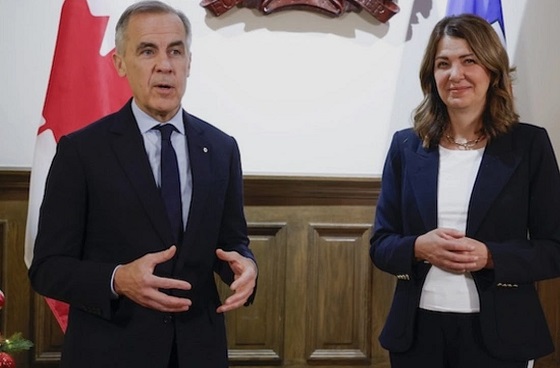
 Alberta2 days ago
Alberta2 days agoREAD IT HERE – Canada-Alberta Memorandum of Understanding – From the Prime Minister’s Office
-
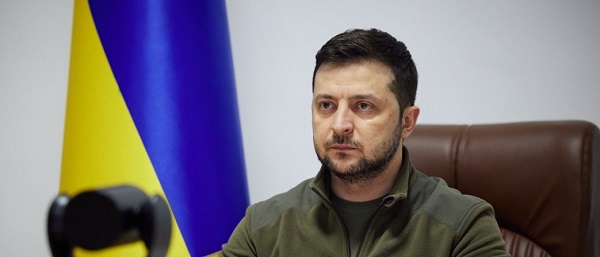
 Daily Caller2 days ago
Daily Caller2 days agoZelenskyy Under Siege As Top Aide Resigns After Home Raided In Major Corruption Scandal
-

 Alberta1 day ago
Alberta1 day agoIEA peak-oil reversal gives Alberta long-term leverage
-

 Bruce Dowbiggin1 day ago
Bruce Dowbiggin1 day agoHealthcare And Pipelines Are The Front Lines of Canada’s Struggle To Stay United
-

 Alberta1 day ago
Alberta1 day agoAlberta can’t fix its deficits with oil money: Lennie Kaplan






